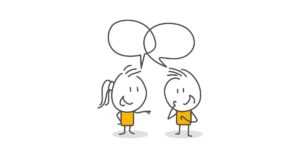48 Interesting Figures of Speech for You
Figures of speech are words or phrases that deviate from literal or ordinary language to convey meaning, create vivid imagery, or evoke emotions. They are used to add depth, complexity, and interest to language, making it more engaging, expressive, and memorable.
Table of Contents

Common Figures of Speech with Example:
1. Alliteration: Repetition of initial consonant sounds in words that are close together.
Example: “She sells seashells by the seashore.”
2. Allusion: Reference to a person, place, event, or work of art that is outside the text itself.
Example: “Their love was a Romeo and Juliet story.”
3. Amplification: Extension or expansion of a detail or idea.
Example: “He was a man of great courage, bravery, and valor.”
4. Analogy: Comparison between two things that are not alike but share a common characteristic.
Example: “He ran like a cheetah.”
5. Anaphora: Repetition of a word or phrase at the beginning of successive clauses or sentences.
Example: “We shall fight on the beaches, we shall fight on the landing grounds, we shall fight in the fields and in the streets.”
6. Antithesis: Contrast or opposition between two ideas or words.
Example: “It was the best of times, it was the worst of times.”
7. Apostrophe: Address to a person or thing that is not present.
Example: “Oh, cruel fate, why dost thou torment me?”
8. Assonance: Repetition of vowel sounds in words that are close together.
Example: “The rain in Spain stays mainly in the plain.”
9. Hyperbole: Exaggeration or overstatement.
Example: “I’m so hungry I could eat a whole elephant.”
10. Irony: Contrast between what is expected and what actually happens.
Example: “The fire station caught on fire.”
11. Juxtaposition: Placement of two or more elements side by side to compare or contrast them.
Example: “It was a dark and stormy night, but inside the house was warm and cozy.”
12. Metaphor: Comparison between two things that are not alike without using “like” or “as.”
Example: “He was a shining light in a dark room.”

13.Metonymy: Substitution of a word or phrase with a closely related word or phrase.
Example: “The White House announced a new policy.”
14. Onomatopoeia: Word that imitates the sound it describes.
Example: “The sizzling bacon crackled and popped.”
15. Oxymoron: Combination of two words that are opposite in meaning.
Example: “jumbo shrimp”
16. Personification: Attribute human-like qualities, emotions, or actions to non-human entities, such as objects, animals, or ideas.
Simile: Comparison between two things that are not alike using “like” or “as.”
Example: “He ran like a cheetah.”
17. Synecdoche: Substitution of a part for the whole or vice versa.
Example: “I got a new set of wheels” (meaning a car).
18. Symbolism: Use of an object or color to represent an abstract idea.
Example: “The American flag represents freedom and democracy.”
19. Tautology: Repetition of the same idea or meaning using different words.
Example: “free gift” or “new innovation”.
20. Understatement: Statement that is less strong or emphatic than what is actually meant.
Example: “He’s a bit of a genius” (meaning he’s extremely intelligent).
21. Verbal irony: Contrast between what is said and what is meant.
Example: “What a beautiful day!” (on a rainy day).
22. Zeugma: Use of a single word to describe two or more different things.
Example: “He caught the ball and a cold.”
23. Hypotaxis: Subordination of one clause to another.
Example: “When I got home, I realized I had forgotten my keys.”
24. Idiom: Fixed expression with a non-literal meaning.
Example: “It’s raining cats and dogs.”

25. Irony of fate: Contrast between what is expected to happen and what actually happens.
Example: “The fire station caught on fire.”
26. Litotes: Understatement used for emphasis.
Example: “He’s not the brightest bulb in the box.”
27. Merism: Use of two contrasting ideas to express a complete or universal concept.
Example: “Day and night, I thought of you.”
28. Metalepsis: Use of a word or phrase to describe something that is not literally true.
Example: “I’m so hungry I could eat a whole elephant.”
29. Neologism: Newly coined word or expression.
Example: “Selfie” or “hashtag”.
30. Onomatopoeic metaphor: Comparison between two things using a word that imitates a sound.
Example: “The city was a beast that swallowed you whole.”
31. Oxymoronic metaphor: Comparison between two things using contrasting ideas.
Example: “He was a dark light in a world of shadows.”
32. Paradox: Statement that contradicts itself or appears to be absurd.
Example: “I must be cruel to be kind.”
33. Periphrasis: Use of a indirect or circumlocutory way of speaking.
Example: “The person who is currently occupying the office of the President” instead of “The President”.
34. Pleonasm: Use of more words than necessary to convey meaning.
Example: “Free gift” or “new innovation”.
35. Polyptoton: Repetition of a word or phrase in a different form.
Example: “Run, running, runs” or “Strong, stronger, strongest”.
36. Prolepsis: Use of a word or phrase to describe something that has not yet happened.
Example: “I’m going to the store, and I’ll buy some milk before I get home.”

37. Prosopopoeia: Attributing human qualities or characteristics to non-human entities.
Example: “The sun smiled down on us.”
38. Pun: Play on words with multiple meanings or sounds.
Example: “Why did the bicycle fall over? Because it was two-tired.”
39. Sarcasm: Use of irony or mocking language to convey contempt or disdain.
Example: “Oh, great, just what I needed, another bill to pay.”
40. Simulacrum: Copy or representation of something that lacks the original’s substance or authenticity.
Example: “The fake designer handbag was a simulacrum of the real thing.”
41. Synesthesia: Use of one sense to describe another.
Example: “The sound of the ocean was a deep blue.”
42. Tmesis: Insertion of a word or phrase into another word or phrase.
Example: “What-so-ever” or “how-ever”.
43. Transference: Use of a word or phrase to describe something that is not literally true.
Example: “He’s a shining light in a dark room.”
44. Ubiquity: Description of something as being present everywhere.
Example: “He was ubiquitous at the party, talking to everyone.”
45. Unison: Repetition of the same word or phrase by multiple people or voices.
Example: “The crowd chanted in unison, ‘We want change!'”.
46. Verbal paradox: Statement that contradicts itself or appears to be absurd.
Example: “I always lie, but this time I’m telling the truth.”
47. Vignette: Brief, evocative description of a person, place, or scene.
Example: “The old man sat alone on the beach, watching the sunset.”
48. Zeugmatic metaphor: Comparison between two things using a word that describes a characteristic of one thing.
Example: “He was a lion on the battlefield, fierce and fearless.”
These figures of speech add depth, complexity, and interest to language, allowing us to convey meaning and create vivid imagery in a variety of ways.

Why Figures of Speech are used in Literature?
Figures of speech are used in literature, poetry, speechwriting, and everyday language to:
- Figures of speech create vivid imagery and sensory experiences
- Figures of speech convey complex ideas or emotions
- Figures of speech add emphasis or stress
- Figures of speech create tone or atmosphere
- Figures of speech engage or persuade the audience
- Figures of speech add depth and complexity to language
By using figures of speech, we can make our language more expressive, engaging, and memorable.
Read and learn more: 15 Literary Theories: Important Principles







One thought on “48 Interesting Figures of Speech for You”